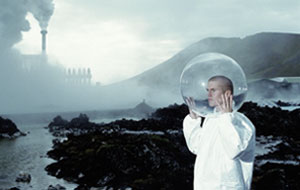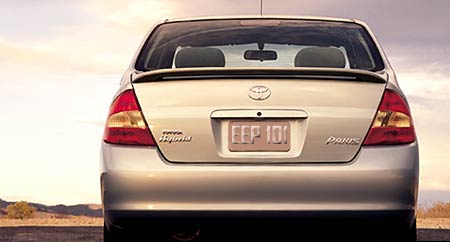|
The issue of smog is a complicated one. On one side, lobbyists argue that regulation is too restrictive. On the other, environmentalists argue that the regulations are not stringent enough. It is therefore no wonder why some EPA regulations have been delayed. Yet, with continuous efforts to increase pollution regulation, and the search for cleaner burning fuels and zero-emission vehicles, the hope of a cleaner and more sustainable future is on its way.
 In 1970, many cities in the United States were reported to have experienced more than 100 days per year of "unhealthy" levels of air pollution (Nebel and Wright 549). Los Angeles was reported to have experienced as much as 300 days per year (ibid.). Thanks to emission controls and greater automobile fuel efficiencies, we today experience better air quality despite the ever-growing numbers of cars and miles driven (ibid.). Unfortunately, the period of replacing old polluting cars with newer "cleaner" cars seems to be coming to an end. Consequently, with the continuous growth in the number of cars and the leniency in fuel economies, a new threat to future progress seems to arise.
In 1970, many cities in the United States were reported to have experienced more than 100 days per year of "unhealthy" levels of air pollution (Nebel and Wright 549). Los Angeles was reported to have experienced as much as 300 days per year (ibid.). Thanks to emission controls and greater automobile fuel efficiencies, we today experience better air quality despite the ever-growing numbers of cars and miles driven (ibid.). Unfortunately, the period of replacing old polluting cars with newer "cleaner" cars seems to be coming to an end. Consequently, with the continuous growth in the number of cars and the leniency in fuel economies, a new threat to future progress seems to arise.
Perhaps due to a roll back on fuel efficiency standards in 1980, the average fuel economy of all vehicles on the United States highway was 24.5 miles per gallon (mpg), with SUVs carrying an average efficiency of 18 mpg (ibid. 549). Yet, technology was available as it was found that a two-stroke engine could cut an engine weight by half, increasing mileage up to the range of 80 to 100 mpg (ibid. 549-550). Today, that potential has not gone away and has been a concern in the political arena.
 Today, most people perhaps are familiar with Toyota's Prius and Honda's Civic Hybrid. Light weight relative to conventional cars, these hybrid cars boast of fuel efficiencies of as much as 66 mpg, while producing one-tenth the pollution of a comparable gasoline car (ibid. 550). While a few years ago, these cars lacked amenities as air conditioning and power accessories, today these cars come with everything from cup holders to automatic climate control to power windows, mirrors, and door locks. Starting from 1998, California law required that 2% of all automobiles sold in the state be powered by electricity, while 10% be sold in 2003 (ibid.). With time, a new market niche in zero emission vehicles may be seen to be emerging. Along with the fact that similar laws as that found in California are being enacted in other states, automobile manufacturers are beginning to devote resources to the research and development of zero emission cars. In time, we may very well see automobiles running on the newer technologies of electric battery power, hydrogen fuel cells, and solar energy.
Today, most people perhaps are familiar with Toyota's Prius and Honda's Civic Hybrid. Light weight relative to conventional cars, these hybrid cars boast of fuel efficiencies of as much as 66 mpg, while producing one-tenth the pollution of a comparable gasoline car (ibid. 550). While a few years ago, these cars lacked amenities as air conditioning and power accessories, today these cars come with everything from cup holders to automatic climate control to power windows, mirrors, and door locks. Starting from 1998, California law required that 2% of all automobiles sold in the state be powered by electricity, while 10% be sold in 2003 (ibid.). With time, a new market niche in zero emission vehicles may be seen to be emerging. Along with the fact that similar laws as that found in California are being enacted in other states, automobile manufacturers are beginning to devote resources to the research and development of zero emission cars. In time, we may very well see automobiles running on the newer technologies of electric battery power, hydrogen fuel cells, and solar energy.
 As it might be important to note, you do not have to be Green to help save the planet. In fact, there are several simple things you can do to help reduce smog. For starters, walking, cycling, carpooling, and using mass transit could help reduce driving and the number of automobiles used. It is estimated that if each commuter car carried just one more person, 600,000 gallons of gasoline would be saved, cutting down emissions significantly ("50 Simple" 42). Yet if driving is necessary, driving within the 30-55 miles per hour speed limit can result in optimal fuel efficiencies (Elsom 143). Moreover, making sure that your car is well maintained through regular smog-checks, tune-ups, oil changes, and proper tire inflations, can help make sure that that fuel efficiency is met ("Smog"). In other cases, simple things like making sure that gasoline is not spilt when filling up the tank of your car, or making sure that lids of chemical products are tightly sealed, can help reduce the release of air pollutants into the atmosphere (ibid.). As can be seen, every little action counts. Thus, there seems to be no reason why people cannot help contribute in the reduction of smog.
As it might be important to note, you do not have to be Green to help save the planet. In fact, there are several simple things you can do to help reduce smog. For starters, walking, cycling, carpooling, and using mass transit could help reduce driving and the number of automobiles used. It is estimated that if each commuter car carried just one more person, 600,000 gallons of gasoline would be saved, cutting down emissions significantly ("50 Simple" 42). Yet if driving is necessary, driving within the 30-55 miles per hour speed limit can result in optimal fuel efficiencies (Elsom 143). Moreover, making sure that your car is well maintained through regular smog-checks, tune-ups, oil changes, and proper tire inflations, can help make sure that that fuel efficiency is met ("Smog"). In other cases, simple things like making sure that gasoline is not spilt when filling up the tank of your car, or making sure that lids of chemical products are tightly sealed, can help reduce the release of air pollutants into the atmosphere (ibid.). As can be seen, every little action counts. Thus, there seems to be no reason why people cannot help contribute in the reduction of smog.
So in the meantime, while the battle between lobbyists and environmentalists continues on, we can all make a difference in our share of reducing smog. Is it worth it in the end? Well, we'll leave that up to you for you to decide.
 Back to top Back to top
|





